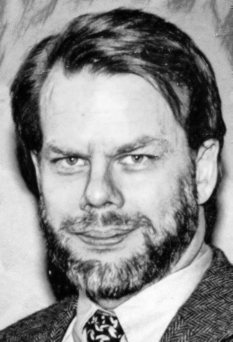David J. E. Callaway | |
|---|---|
 David J. E. Callaway | |
| Alma mater | University of Washington; Caltech |
| Scientific career | |
| Fields | Biological physics |
| Institutions | New York University School of Medicine |
| Thesis | QCD and Weak Asymmetries in Lepton Pair Production (1981) |
| Doctoral advisor | Ernest M. Henley |
David James Edward Callaway is a biological nanophysicist in the New York University School of Medicine, where he is professor and laboratory director. [1] He was trained as a theoretical physicist by Richard Feynman, Kip Thorne, and Cosmas Zachos, and was previously an associate professor at the Rockefeller University after positions at CERN and Los Alamos National Laboratory. Callaway's laboratory discovered potential therapeutics for Alzheimer's disease based upon apomorphine [2] after an earlier paper of his developed models of Alzheimer amyloid formation. [3] He has also initiated the study of protein domain dynamics [4] by neutron spin echo spectroscopy, providing a way to observe protein nanomachines in motion. [5] [6]
Contents
Previous work includes the invention of the microcanonical ensemble approach to lattice gauge theory with Aneesur Rahman, [7] [8] work on the convexity of the effective potential of quantum field theory, [9] work on Langevin dynamics in quantum field theory with John R. Klauder, [10] a monograph on quantum triviality, [11] constraints on the Higgs boson [12] and papers on black holes [13] and superconductors. [14] His work in these areas is highly cited and notable. [15] [16]

